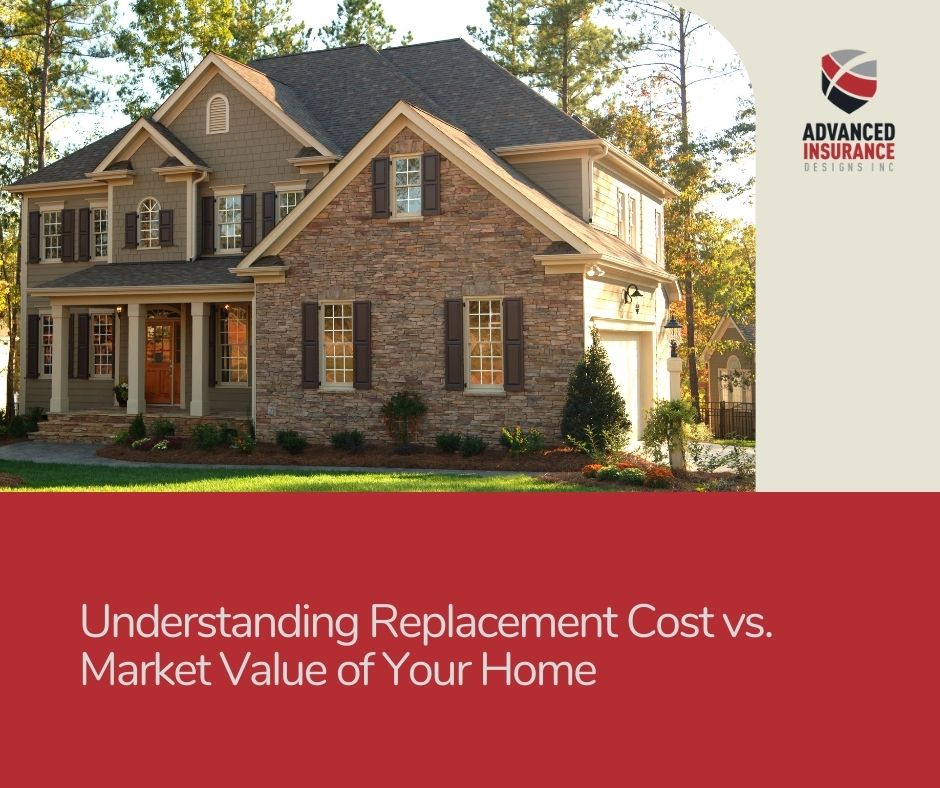
The real estate landscape has significantly changed in recent years, with home values experiencing dramatic increases. This shift has left many homeowners puzzled, especially when comparing their homes’ replacement cost and market value. Additionally, the discrepancy between these values and insurance premiums has been a source of confusion. This post aims to demystify these concepts, using 2024 statistics to provide a clearer understanding.
Replacement Cost Explained
Replacement costs are the money required to rebuild your home from scratch at current prices. Estimates are created based on a total loss scenario. This includes materials, labor, demolition and debris removal, and other expenses associated with the construction process. Unlike market value, replacement cost does not consider the land value since the land your home is on typically isn’t at risk from the perils covered by your homeowner’s insurance policy.
Replacement Cost Definition: The replacement cost represents an estimate to rebuild your home today, from the ground up, using like-kind and quality materials.
Factors Affecting Replacement Cost in 2024
- Inflation: The cost of raw materials has surged due to inflation, significantly impacting the overall replacement cost. For instance, lumber prices have seen fluctuations that directly affect building costs. From 2021 to 2024, prices rose around 14%, according to the Bureau of Labor Statistics.
- Labor Shortage: The construction industry is experiencing a labor shortage, exacerbated by the pandemic’s long-term effects and shifting workforce dynamics. This shortage has led to higher labor costs, as demand for skilled workers exceeds supply. In 2024, the construction industry in the United States is expected to face a significant workforce shortage, needing to attract an estimated 501,000 additional workers beyond the average hiring pace to meet labor demand.
- Technological and Building Code Changes: As building codes evolve to accommodate new safety, energy efficiency standards, and technological advancements, the cost to rebuild a home to current standards can be substantially higher than when it was initially constructed.
Market Value Defined
On the other hand, market value is the price at which a property would sell under current market conditions. This value is influenced by location, demand, the home’s condition, and recent sales of comparable properties.
Why Market Value Can Differ from Replacement Cost
Market value might significantly exceed the replacement cost in areas with high land value because the latter does not include land. Conversely, the replacement cost might surpass market value in regions with steep construction costs or homes with unique features that are expensive to replicate.
The Insurance Value Conundrum
Many homeowners notice that their home’s insured value—often aligned with its replacement cost—is higher than its market value. This discrepancy is particularly stark in 2024, where inflation, labor shortages, and increased construction costs have inflated replacement costs.
Insurance companies focus on the cost of rebuilding your home rather than its sale price. This approach ensures that you are fully protected in the event of a total loss, but it can also lead to higher premiums. Insurance values are calculated to cover the complete cost of rebuilding your home, including labor, materials, and compliance with current building codes, which may have changed since your home was first built.
Conclusion
Understanding the difference between replacement cost and market value is crucial for homeowners, especially in today’s volatile market. While it might be unsettling to see your home’s insured value exceed its market value, this measure is designed to protect you, ensuring you can rebuild your house entirely. Remember, replacement costs change over time, so monitoring and updating them as needed is crucial. If you modify your home, keep your insurance agent informed. Labor and material costs also fluctuate based on location and other factors, so sensitivity to these changes ensures accurate coverage.
As we navigate through 2024, keeping abreast of these values and their influencing factors is more critical than ever. Homeowners should review their insurance policies to ensure adequate coverage, considering the current trends in home values, inflation rates, and the construction industry’s challenges. By doing so, you can safeguard your most valuable asset against the unexpected, secure in the knowledge that your coverage meets your home’s evolving needs.
